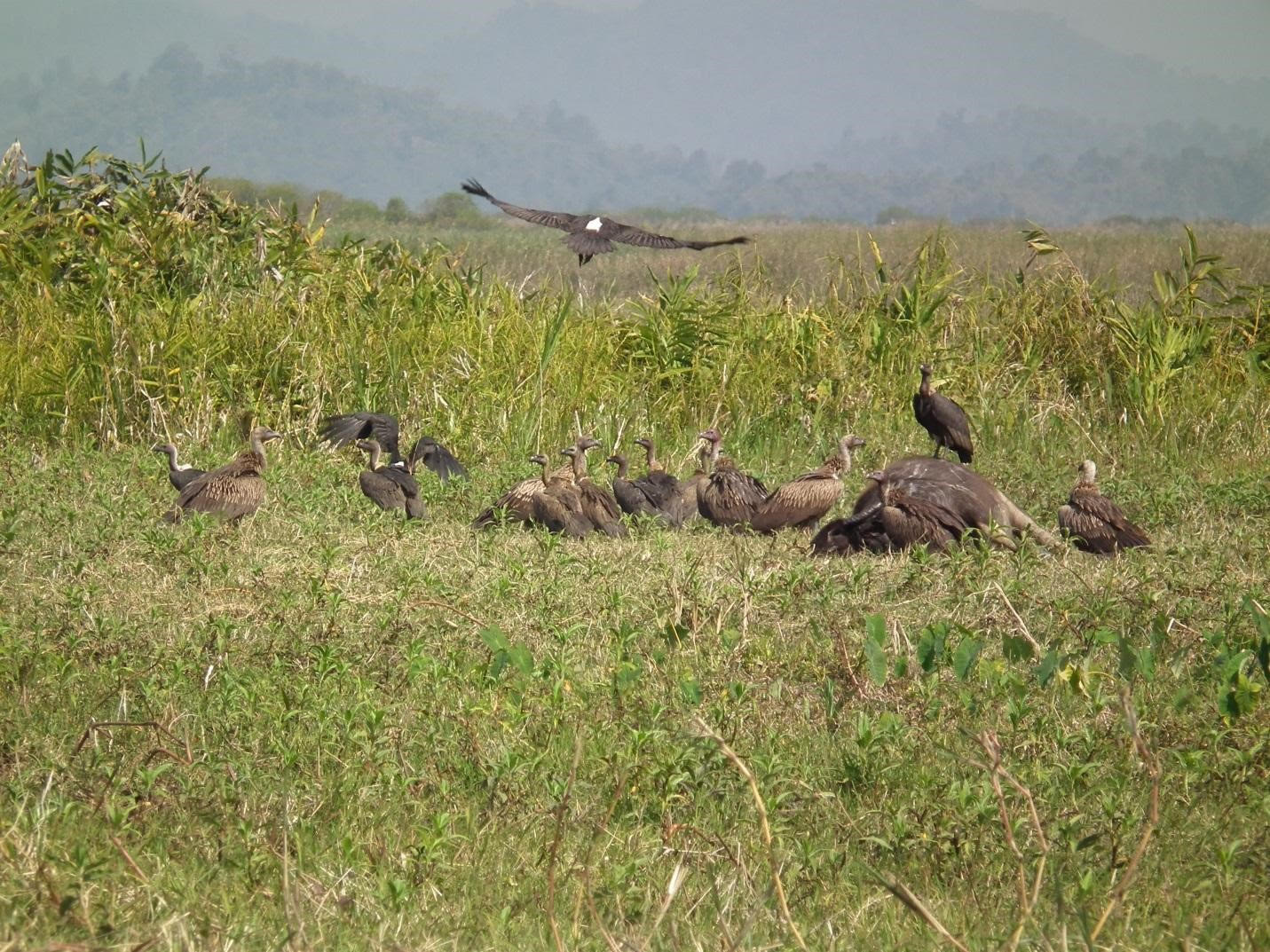By Niña Catherine P. Calleja
In a tea shop at Indawgyi Lake Wildlife Sanctuary (ILWS), information about illegal logging activities gets passed around. A verified tip-off from a concerned individual could often lead to the detection of areas with log piles.
This initiative from communities surrounding the lake and its forests has prompted Fauna & Flora International (FFI) to formally set up a network of informants against illegal logging and other forest crimes in January 2018, with support from the Small Grants Programme (SGP) of the ASEAN Centre for Biodiversity and the German Development Bank (KfW). FFI is an international wildlife conservation organisation supporting local civil society organisations in Myanmar.
ILWS has been identified as one of the pilot sites of the SGP, an ongoing project that aims to conserve biodiversity and improve livelihoods in and around ASEAN Heritage Parks of Indonesia, Myanmar, and Viet Nam.
SGP also works to enhance the capacity of local organisations and support the collaboration of all governmental, non-governmental, academic, and private sector organizations towards biodiversity conservation.
Mark Grindley, country director of FFI Myanmar Country Programme, said activities to raise awareness on the importance of conserving protected areas are being done to persuade community members to report forest crimes to authorities.
“Initially, the network has 10 members. It grew over time with 50 participants from different age and ethnic groups and professional backgrounds,” he said.
While the information received is shared right away with the management of ILWS, the informants’ identities have been kept confidential for security reasons.
ACB Executive Director Theresa Mundita S. Lim said the contributions of the communities at ILWS prove how invaluable community participation is in biodiversity conservation.
“Communities are our best allies in biodiversity conservation. Since they reside in and around ILWS, they have a greater stake in the sustainable management of its resources. They are also the ones who immediately take the brunt of the effects of biodiversity loss,” Lim said.
Law enforcement as priority
ILWS, one of Myanmar’s eight ASEAN Heritage Parks, is one of Myanmar’s high conservation value areas as it teems with the world’s most threatened species, such as the Eastern hoolock gibbon, Shortridge’s langur, Asiatic black bear, Chinese pangolin, and gaur.
Its pristine lake and evergreen forests support over 20,000 migratory water birds and the 50,000 people living in and around the area.
But this peace and calm at ILWS is often disturbed by growls of lumber mills, reverberating signs that illegal loggers are present in the area. One may follow trails of logging activities through roads built and sights of elephants carrying logs from steep mountain slopes.
Lim said illegal logging activities, among others, threaten the population and diversity of wildlife. “With the emergence of infectious diseases, we have seen the consequences of degradation of habitats and overharvesting of wildlife and vegetation to public health and safety. Recent global events remind us of biodiversity’s role in regulating these diseases,” Lim added.
As illegal logging activities continue to put a strain on the biodiversity of ILWS, law enforcement has been identified as one of the priorities in the sanctuary’s first-ever Collaborative Management Plan (CMP).
With the SGP’s assistance, park authorities and members of the communities, and local organisations like the FFI worked together to craft the CMP. The CMP lays down action plans for five years, from 2017 to 2022.
Under the ACB, The SGP has been working closely with the FFI in boosting law enforcement activities in the area.
Apart from the informants’ network, community rangers were recruited to support the forest and lake patrol units at ILWS.
Similarly, road barriers to protect forest areas in the core zone have been set up. In November 2018, a community-based forest monitoring unit was created following the existing patrol guidelines. With park authorities, this unit conducts patrols monthly to monitor threats at ILWS.
Grindley said that since the formation of the informants’ network in 2018, 13 logging businesses and their sites have been reported to the authorities. Twenty-six logging camps were also detected by the ILWS management, 22 of which were reported by the network.
He pointed out, however, that a major challenge to the ILWS park management and the local authorities is ensuring that all information received is acted upon.
Timber logging on a decline
An FFI report dated 14 November 2019 said illegal timber logging at ILWS has been on a decline following the improvement in the law enforcement and patrols.
The downward trend has been confirmed by multiple monitoring mechanisms and data sources, according to the report.
The number of distinct logging operations reported by the informants’ network decreased from 30 in the first half of 2018 to less than 5 in the second half of 2019.
The number of logs and sawn timber found in the forest likewise decreased from 250 pieces in the first half of 2018 to zero in the second half of 2019, based on the data generated by the Spatial Monitoring and Reporting Tool (SMART) approach. The SMART approach combines standardized patrol data collection, and site-based database management and decision-making, with an emphasis on capacity building and best practices for protection.
The FFI likewise cited the creation of the informants’ network and the community-based forest monitoring units, along with SMART approach being employed and the established road barriers, as contributing factors to robust monitoring of data on forest crimes and the reduction of illegal logging cases.
Lim likewise underscored the capacity enhancement activities being conducted to cultivate environmental stewardship among the members of the communities.
With 50 active members helping the ILWS’ park management, which at present employs 14 staff members, the informants’ network provides a strong boost to the management’s law enforcement.
“We aim to foster a strong collaboration between the government and members of the communities. As this partnership is sustained, we hope to curb illegal logging, along with other forest crimes that drive degradation of habitats and biodiversity loss,” Lim said.



